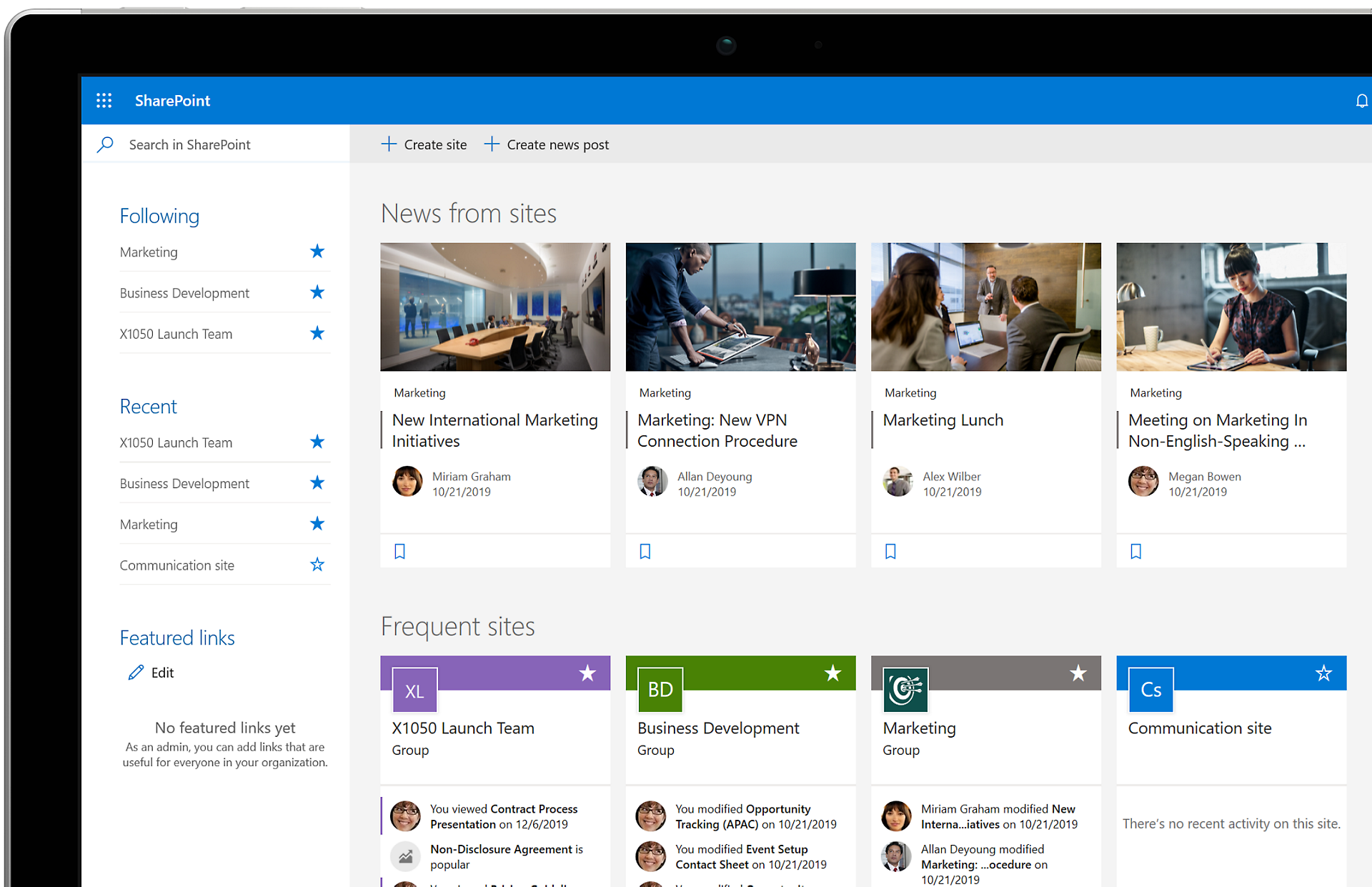 The successful orchestration of tasks, data, and resources has become a critical cornerstone for success in the changing world of modern business. Enter Management System Software. It is a game-changing technical advancement that has fundamentally changed how businesses run, manage, and optimize their operations. In this article, we examine the core ideas behind management system software. We will also investigate its description, features, and the various industries it affects. This kind of software has become a key component of productivity. It is also a tool for strategic decision-making for businesses of all sizes, whether it is for streamlining processes, improving communication, or gaining actionable insights from data. In this article, we’ll provide insights into “What is a management system software?”
The successful orchestration of tasks, data, and resources has become a critical cornerstone for success in the changing world of modern business. Enter Management System Software. It is a game-changing technical advancement that has fundamentally changed how businesses run, manage, and optimize their operations. In this article, we examine the core ideas behind management system software. We will also investigate its description, features, and the various industries it affects. This kind of software has become a key component of productivity. It is also a tool for strategic decision-making for businesses of all sizes, whether it is for streamlining processes, improving communication, or gaining actionable insights from data. In this article, we’ll provide insights into “What is a management system software?”
What is a Management System Software?
The term “management software” informally refers to a specific class of computer programs. These programs simplify the complexity of complicated activities and projects. Additionally, they seek to promote teamwork and project reporting. The majority of management software programs are capable of handling tasks like scheduling, task assignment, budgeting, time and risk analysis, and more.
Features of Management Software
It should come as no surprise that providers of management software have created a dizzying assortment of features, integrations, and support packages to satisfy the requirements of companies of all sizes. But fundamentally, their strategies have four things in common.
Scope Definition
Any new endeavor must have a clearly defined outcome before moving forward. Project specifications, client deadlines, budgets, resources, and all other information necessary for the team to act are all arranged with management software.
Resource Allocation
To keep the entire team moving toward its common goal, management system software needs to find skill and manpower gaps before they interrupt workflow.
Benefits of a management system software
Using this approach can enable you to work more productively. By simplifying team communication and project reporting, it seeks to reduce the complexity of complicated large projects. These programs can arrange assets, workers, plans, tasks, budgets, and dangers. The industry offers a variety of software management systems, including on-premises and cloud-based software. Each software has a unique collection of features that companies can value. These are management software’s main advantages.
Painless project planning
Planning and scheduling a project is crucial. Without careful planning, you can waste your team’s valuable time. However, there is a solution to this. Software project management systems are capable of comprehending project limitations. They can analyze aspects such as the price, scope, and schedules by providing precise AI forecasts. These forecasts provide information about when you can complete projects, at the current rate of your progress.
Automation of project planning and scheduling is the main advantage of software management systems. Offering tools to cover important objectives and roles before executing, establishes a strong foundation for initiatives. This keeps the plan current and tracks advancement relative to your starting point. It would have been difficult to reduce planning expenses ten years ago. The best resources are now automatically assigned, and software project management tools may provide a more precise estimate.

Pipeline Predictions
Project managers typically manage several projects at once. Organizations can increase their competitiveness and profitability with these applications. Project manager software empowers businesses to embrace new projects and coordinate them. However, there are disadvantages to multi-project management. It can be difficult to figure out how to properly divide resources across several projects. Software management systems give everyone a clear view of completed, ongoing, and anticipated projects, preventing gridlocks of all types from developing into major issues.
Effective Assignment of Tasks
You need to have a successful task delegation plan if you want to complete tasks successfully. By doing this, you can keep teams in good form without overworking them. Fixing insight and resource bottlenecks are easier when using management software. This is because they allow you to assign priority tasks to people who are now available. To maintain seamless and effective operations, this program may also send out automatic reminders before the due date.
Better team collaboration
Enhancing team collaboration is one of the goals of software project management systems in addition to resource management. Individual assignments that are a part of a bigger project are typically given by team leaders. Employees may easily cooperate on projects by talking about tasks, timetables, budgets, dependencies, overdue work, and more while using this management system. By keeping everyone in the loop, it is possible to ensure that everyone on the team is aware of the tasks that should take priority. This maintains team cohesion, which cuts down on rework and ensures quick service delivery.
Improved Productivity
Software for management systems is essential for increasing productivity in all industries. This software simplifies productivity, minimizes manual interventions, and lowers errors. All of this is possible because it integrates and automates fundamental business activities. It enables teams to work together, make educated decisions, and use resources effectively. Management system software has features like centralized data storage, real-time collaboration, and job tracking. Additionally, its data analysis and reporting capabilities offer priceless insights.
These insights support locating bottlenecks, enhancing processes, and establishing concrete objectives. They also aid in speeding up a company’s decision-making and problem-solving processes. This is thanks to the availability of information through user-friendly interfaces, which are frequently accessed remotely. Overall, management system software serves as a catalyst for increased productivity. They enable businesses to concentrate their efforts on innovation and strategic growth rather than getting bogged down in routine administrative activities.
Budget Management
The budget is one factor to take into account when managing projects. You can monitor your project’s budget and make sure you don’t overspend by using management software. It gives you measurable proof of what workers have already completed and for how many hours. The individuals in charge of the budget may monitor where and how much a business spends money in real time.
Progress Monitoring
To achieve long-term success, it is crucial to monitor the progress of your team’s work. Systems for managing software projects are essential for keeping track of projects and determining whether tasks will reach deadlines or not. The daily time registrations that are immediately entered into the reporting mechanism do this. You can use specialized software to help you make wise judgments.
Document Sharing and Access
Your documents stay in one location by software management. This stops you from misplacing or losing crucial data. In addition, you may trace any changes, which increases accountability and transparency.
What is a document management system?
A document management system (DMS) tracks and stores electronic documents and scans of paper-based information. It functions as a program on a computer or a group of programs. There are several components to a DMS. They often include an indexing engine, a central repository, and a collection of application program interfaces (APIs). These APIs connect the DMS to other business systems and procedures. A DMS’s primary function is to offer a safe, orderly method of tracking, storing, and retrieving documents while also preserving their integrity and authenticity.
Microsoft SharePoint is an example of a popular DMS. Sharepoint is a widely used platform that provides extensive document management capabilities. Users may create, save, collaborate on, and share a variety of document types, including Word documents, Excel spreadsheets, PowerPoint presentations, and more, in this centralized repository. Sharepoint’s version control enables several users to work on a document at once. It also allows users to track changes and maintain a history of revisions. In order to protect data security and compliance, it also enables access control, allowing administrators to specify who can view, edit, and delete particular documents.
What is an example of a management system?
The popular Customer Relationship Management (CRM) software is an example of a management system. A CRM system assists organizations in managing client interactions efficiently. Specifically, they can streamline the sales process, and improve customer service. This kind of management system enables businesses to keep client information, monitor communication history, and examine purchasing trends. CRM systems do this by utilizing a single digital platform. Furthermore, a CRM system gives sales and marketing teams a thorough understanding of client interactions and preferences. With this information, businesses can now customize their plans, find potential leads, and look after current relationships. This not only increases client satisfaction but also helps to increase sales and money.
The Enterprise Resource Planning (ERP) system is another well-known illustration. An ERP system unifies a number of essential corporate operations, including finance, inventory control, purchasing, and human resources onto a single platform. Organizations can synchronize their operations seamlessly with an ERP system. They can also share information across departments, and make data-driven choices. ERP systems increase efficiency by removing silos and minimizing human data entry. This is possible by providing real-time insights into key performance metrics, resource allocation, and supply chain dynamics. Increased production, cost savings, and a more quick reaction to market changes are the outcomes.

What are the 3 main management systems?
Enterprise Resource Planning (ERP), Customer Relationship Management (CRM), and Human Resource Management (HRM) systems are the three primary management systems. These systems are critical to streamlining organizational operations and increasing productivity.
Business operations and procedures are all integrated into a single platform by enterprise resource planning (ERP) systems. They include finance, inventory management, procurement, manufacturing, and distribution features. Furthermore, ERP systems are complete software solutions. ERP systems provide seamless departmental collaboration, minimizing manual errors, and increasing overall productivity by centralizing data and automating procedures. These systems provide Real-time insights into important performance parameters. With these features, they assist decision-makers in resource allocation, supply chain optimization, and market condition adaptation. ERP systems are essential for optimizing processes, enhancing teamwork, and ensuring a comprehensive picture of an organization’s operations.
Systems for managing customer relationships (CRM) aim to manage customer contacts and improve the overall customer experience. These systems give businesses the ability to keep track of communication history. They also save and analyze customer data, and modify marketing plans according to customer preferences. CRM systems enable firms to offer individualized services. With them, businesses can invest in cross-selling and upselling opportunities, while fostering long-lasting connections by giving a 360-degree perspective of client interactions. As a result, there is an improvement in consumer happiness and loyalty, which ultimately leads to more revenue generation.
Systems for managing human resources (HRM) are primarily concerned with streamlining internal organizational HR procedures. These systems cover a variety of functions,. They often include hiring, onboarding, performance evaluation, and payroll processing. HRM systems centralize employee data, expedite office procedures, and improve interaction between HR departments and staff members. Organizations may devote more time and money to improving HR tasks. These may include strategic projects, personnel development, and building a healthy workplace culture through automation. HRM systems support enhanced employee engagement, efficient compliance with labor laws, and better workforce management.
Conclusion: What is a Management System Software?
In conclusion, it is impossible to overestimate the importance of management system software. This is especially true for modern enterprises and businesses. These software solutions provide an essential framework for streamlining processes. Furthermore, they increase efficiency and promote cooperation. This is especially beneficial for firms as they navigate an environment that is ever more complicated and dynamic.
Management system software enables decision-makers to make well-informed decisions that promote growth and innovation. This is possible by centralizing data, automating repetitive operations, and offering real-time insights. The adoption of the tool alone is not enough for successful deployment; a strategic approach, user education, and a willingness to adapt to changing demands are all necessary. As technology develops, organizations that not only survive but succeed in the competitive and fast-paced business climate of today and tomorrow will be those who embrace the promise of management system software.
Management system software shines as a beacon of efficacy, efficiency, and adaptability. This is especially important in the constantly changing world of corporate management. Management system software has the ability to integrate many processes in a business. They improve communication and give a comprehensive picture of operations that represents how to efficiently run a business. This kind of software has the ability to shape the future of management. There is a symbiotic interplay between human ability and technical prowess as we move forward. Adopting management system software is not only a tech-driven, smart decision. It is a strategic necessity for fostering adaptability, resilience, and long-term growth. Organizations may unlock the full potential of management system software to overcome constraints and seize emerging opportunities by building an ecosystem where innovation and data-driven decisions thrive.









